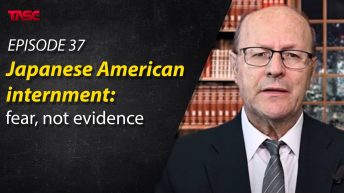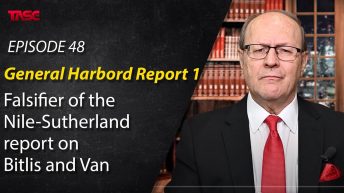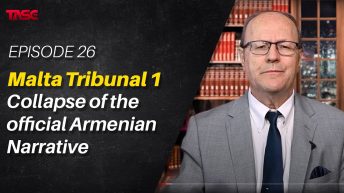Judge questions genocide advocate: How can you be so sure it was genocide? I wrote this letter to a scholar at Stanford University’s Global Studies (SGS) program, about a travel grant opportunity for qualified students to participate in “the alleged” Armenian Genocide Centennial Commemoration, taking place in Istanbul, Turkey in April 22-24, 2015. The Stanford professor was offering up to three travel grants of $2,500 each for students whose research would benefit from their participation and inviting online applications. All sounds so constructive, progressive, peaceful, and innocent, doesn’t it? But don’t allow looks to fool you. This whole program was designed to promote an entrench a biased, racist, and dishonest interpretation of a controversial slice of history as settled History. The title of my letter dated March 3, 1915 was: “How can you be so sure it was genocide?” Here is what I wrote: “This simple question, posed by one of the presiding judges of the Grand Chamber of the European Court of Human Rights (ECHR) to the lawyers defending the official Armenian narrative during the January 28, 2015 appeal hearings in Strasbourg, France, sums it all up, doesn’t it? It is like “the king is naked” call of the “genocide industry”. Here is why. The United Nations 1948 Convention on Prevention and Punishment of Genocide provides the definition of genocide and stipulates that a) genocide charges can only be litigated at a “competent tribunal,” b) which shall follow “due process,” c) to prove “intent to destroy.” Such was never done in the case of Turkish-Armenian conflict surrounding the 1915 events and no court verdict exists saying it is genocide. To call it one anyway would be defrauding the unsuspecting public that there is somehow a genocide verdict when we all know that there is not. The Kangaroo courts of occupied Istanbul, called Istanbul Courts Martial, by the partisan Ottoman judges (1919-1920,) designed to settle political scores with the Committee of Union & Progress (CUP) left no room for due process. Malta Tribunals (1919-1921) were abandoned by the crown prosecutors before they could start due to lack of evidence that could withstand the scrutiny of the court room. The British had complete control of the Ottoman archives for five years (1918-1923) and could not come up with any evidence of genocide. The 1916 Ottoman Courts Martial prosecuted some of its own military personnel for mistreating Armenians and proving, in the process, that TERESET, the 1915 temporary relocation order and its implementation, could not have been a genocide. Nevertheless, TERESET has been skillfully and persistently dressed as genocide by anti-Turkish, Islamophobic, and/or other special interests who would deliberately ignore the other side of the story. In a landmark decision, ECHR unequivocally supported the above position in its Dec 17, 2013 verdict on Perincek vs Switzerland that “[t]he existence of a ‘genocide’, which was a precisely defined legal concept, was not easy to prove”. The European Court of Human Rights (ECHR) added: “doubted that there could be a general consensus… given that historical research was, by definition, open to discussion and a matter of debate, without necessarily giving rise to final conclusions or to the assertion of objective and absolute truths”. The ECHR also created a legal precedent of inadmissibility of any comparison between the Holocaust and the Armenian claims; the latter lacks what the former clearly has: concrete historical facts, clear legal basis, and existence of the “acts had been found by an international court to be clearly established”. The Armenian lobby can no longer hide behind “denier” accusations after the ECHR issued its 2013 (and then again in appeal in 2015) verdict in Perincek vs Switzerland that events of 1915 cannot be classified as genocide. Mutual suffering and fair memory are the operative words here if fair memory, joint narrative, truth, honesty, peace, and eventual closure are the goals. May I remind you: 1) By December 1914, Armenian insurgents have already killed 120,000 Muslims, mostly Turkish. 2). Ottoman-Armenian scouts helped Russian armies invade North Eastern Anatolia during the ill-fated Sarikamish campaign while other Armenians joined the Russian invaders. 3) On April 19, 1915, Armenian insurgents revolted in Van and by 17 May, they have killed or forcibly removed about 80,000 Ottoman Muslims, destroying all of the Muslim quarters of the City of Van. They then presented the key to the city to the Russian commander of the invading Russian armies. Supreme treason with 80,000 more Muslim victims! How can we reach closure if the Turkish pain is “systematically” ignored out of bias?…” (For her response and my answer to her response, please watch the video clip.SHOW LESS
Myths and Realities, Uncategorized




Add comment